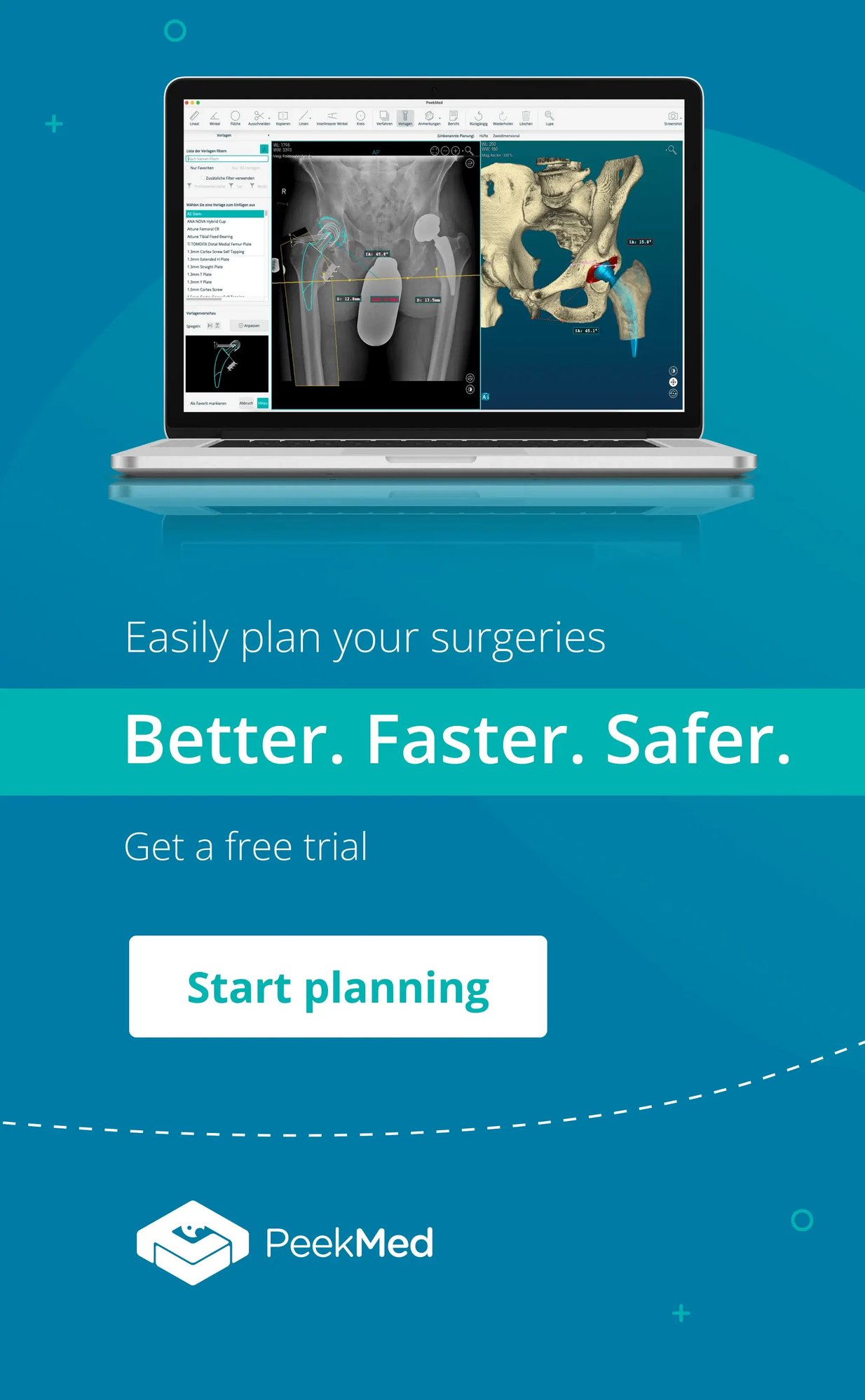PeekMed
Precision matters in every cut you make.
You already know that. And you’ve seen how 3D-printed bone models change the way you plan surgery.
Now imagine holding a patch of living tissue, shaped for your patient, ready to support healing. Sounds like science fiction? It’s getting real, and you should know how to prepare.
Here’s what we’ll cover: what bioprinting is, how it connects to what you already do with PeekMed, and where this could take surgery next.
What is bioprinting?
Think 3D printing, but with living cells.
A printer lays down a special gel, called a bioink, mixed with cells. Layer by layer, it builds a structure that behaves like tissue.
Some labs print skin grafts. Others work on cartilage or tiny vascular networks. The goal? Tissue that fits a patient like a glove and integrates with the body.
You already rely on patient-specific models. You trust them to guide every screw and plate.
Here’s the deal: those same digital models can become the blueprints for living tissue. The jump from planning to implantation is smaller than it looks.
And the best part? It’s not just about replacement. Printed tissues could speed up healing, reduce OR time, and cut down on revision surgeries.
Where PeekMed fits in
PeekMed already helps you create 3D models from patient imaging. See how it works.
Those models aren’t just for visualizing anatomy. They’re ideal starting points for bioprinting. A clean digital plan means a cleaner path to a printed graft or guide.
Want proof? Our blog on 3D-printed surgical guides shows how customized planning reduces time and improves accuracy. Bioprinting builds on the same principle: now, the model can not only guide but also live.
What’s happening in the field right now
- Tissue patches — labs produce vascularized skin and cartilage for reconstructive cases.
- On-site printing — researchers are exploring portable printers for burns or trauma, printing tissue right where it’s needed.
- Drug testing and training — bioprinted models mimic human tissue more accurately than plastic or cadaveric material, enabling surgeons to rehearse complex steps.
Want to dig deeper? Check out our article on 3D printing in orthopedics. It shows where personalization is already saving time and reducing complications.
The roadblocks (and why that’s good news)
Large organs need blood vessels. Building capillary networks at scale is still hard.
Regulators are cautious, as they should be. And every hospital needs validated workflows before trying new implants.
But here’s the thing: every hurdle means safer, smarter integration. The path may be slower, but when it arrives, it will arrive solid.
What you can do today
- Use PeekMed to create precise digital twins of surgical targets.
- Combine those models with 3D printing to test surgical approaches physically.
- Follow the bioprinting space, the leap from printed bone to printed tissue will be easier if your planning pipeline is already optimized.
Want a place to start? Browse our 3D printing insights. They’ll give you the context you need to move from planning to living models smoothly.
You’ve already seen how personalized models sharpen your decision-making.
Now imagine that same workflow delivering grafts made of living cells. A clean fit, reduced trauma, faster recovery, not in theory, but in your hands.
We’re not printing whole organs tomorrow. But we’re building the path, layer by layer. And with PeekMed, you’re already walking on it.
Want to talk about integrating 3D modeling into future bioprinting workflows?
Get in touch with our team, we’re here to help you plan ahead, one precise layer at a time.
References
Kim J, Kim W, et al. Bioprinting of Vascularized Tissues for Regenerative Medicine. Advanced Healthcare Materials. 2025. Available here
Saha A, et al. 3D Bioprinting in Cancer Applications. ResearchGate. PDF
Chaudhary S, et al. 3D Bioprinting in Orthopedics: Transforming Personalized Healthcare. ResearchGate. PDF
Paxton NC, et al. Clinical Translation of Bioprinting: Current Challenges and Future Opportunities. Advanced Materials. 2023.
Available here
Tabriz AG, et al. 3D Bioprinting Technologies in Tissue Engineering and Regenerative Medicine. Biomedicines. 2025; 12(1):76.
Available here
Ding H, et al. In Situ Bioprinting: From Concept to Clinical Translation. Advanced Healthcare Materials. 2025.
Available here
Xie R, et al. 4D Bioprinting for Dynamic Tissue Engineering. Advanced Healthcare Materials. 2025.
Available here



